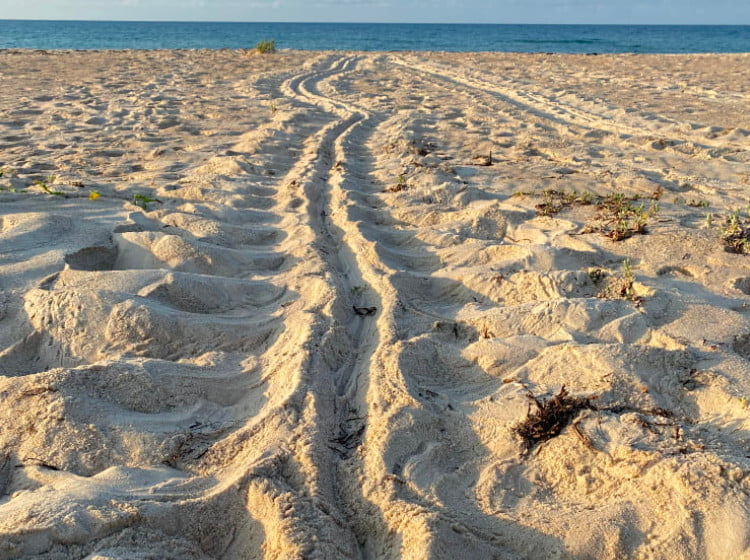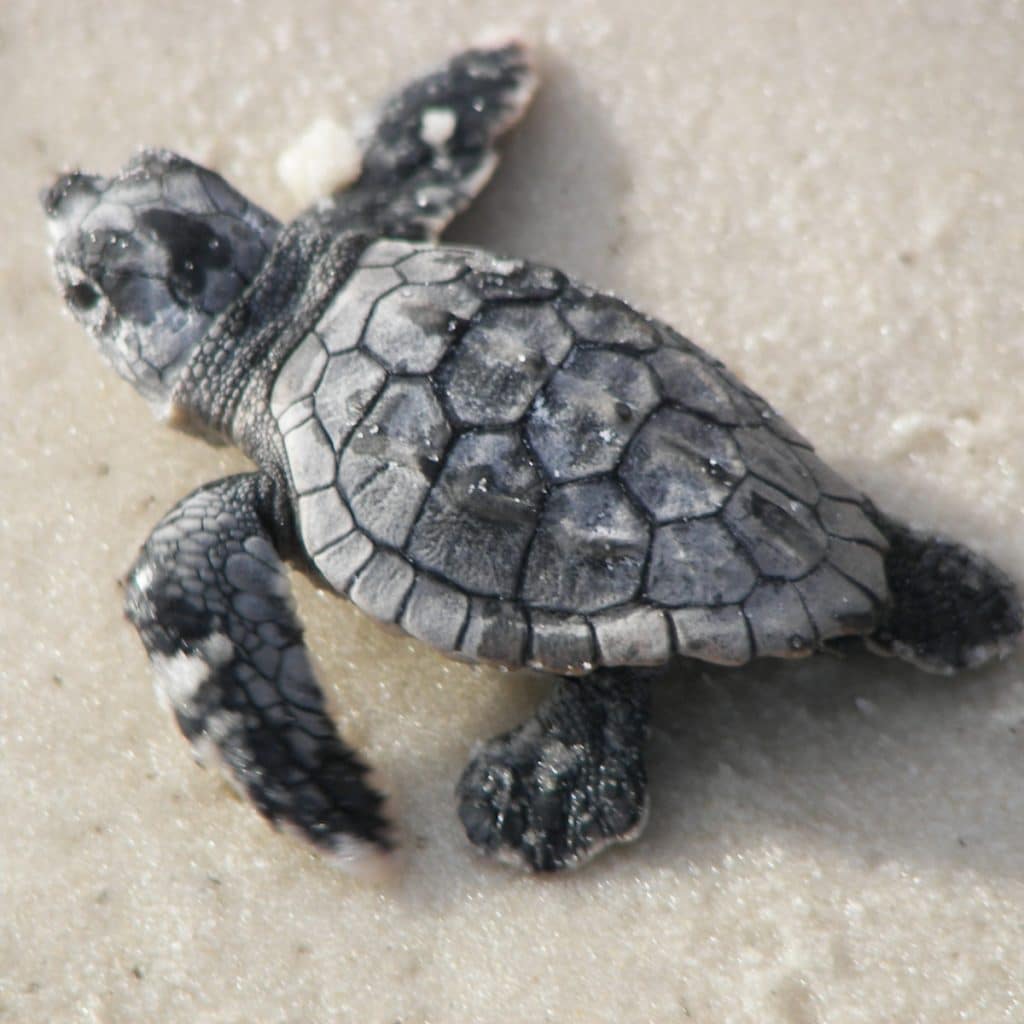11 Fun Facts About Sea Turtles on the Forgotten Coast
By Forgotten Coast Web Team | July 24, 2023

Turtle Season on the Forgotten Coast runs from May 1st through October 31st, and if you walk more than 100 feet on the beach, you will likely run into a roped-off sea turtle nest. They are everywhere. Sea turtles are one of the most fascinating natural wonders of our area. Here are some fun facts about our four flippered friends.

- People often mistake tortoises on the beach for sea turtles. Not all turtles are tortoises, but all tortoises are turtles. Sea turtles have flippers, live in the sea, have a flat, streamlined shell, and eat plants and animals. Tortoises have feet, live mainly on land, love veggies, and have dome-shaped shells.
- Our area is a mating and nesting ground for loggerhead turtles, green turtles, and leatherback turtles. Loggerhead turtle nests are the most commonly found nests on the Forgotten Coast.
- Recently scientists discovered that sea turtles find their way home by their internal compasses and tuning into the earth’s magnetic fields. They use these fields like we use longitude and latitude, and they miraculously make their way back to the shores where they were born to lay their clutch.
- Female sea turtles don’t eat during nesting season. They must fast to allow their intestines to shrink to grow around 100 ping pong ball-sized eggs.
- Usually, the female sea turtle crawls out of the ocean at night and chooses a spot to nest. She digs with her flippers and uses her body to create a “body pit” to lay her eggs.
- Sea turtles typically lay around 100 eggs, and said eggs incubate in the sand for approximately 60 days.
- The temperature of the sand determines the gender of the baby sea turtles. Cooler sand produces more males, and warmer sand makes more females.
- The survival rate of hatchlings is relatively low. Studies have shown ranges anywhere from 1 in 1,000 survive to 1 in 10,000 survive.
- While the sea turtle eggs and hatchlings have natural predators like coyotes, raccoons, birds, fish, and crabs, they also face plenty of man-made obstacles like holes in the sand, sandcastles, beach chairs and equipment, and lights. When hatchlings are born, they know to look to the lighter horizon and head that way. It’s not hard for these baby sea turtles to get confused by porch lights and lit signs. If they head in the wrong direction, they can become susceptible to predators and dehydration.
- Sea turtles typically live between 50 and 100 years. Females become mature enough to lay eggs after 30 years, and they have been known to lay eggs into their 80s.
- The St. George Island Volunteer Turtlers, the Alligator Point Turtle Patrol, The Dog Island Turtle Patrol, the Apalachicola National Estuarine Research Reserve, the US Fish, and Wildlife Service, and the Florida Park Service all work together for the protection of sea turtles. The most prominent work is done by those who walk the beaches early every morning in search of new nests.
Sea turtles are one of the Forgotten Coast’s valued treasures. You can help in the protection of sea turtles by following these guidelines:
- Leave no trace—As you leave the beach, fill in holes, break down sandcastles, and remove everything you brought with you, including tents, chairs, and toys.
- Lights out—turn off all outdoor lights at night, draw the shades, and follow the Franklin County Ordinance for marine turtle protection.
- Respect roped off nest areas.
Photo Credit Kaitlyn Zavesky, St. George Island Sea Turtle Patrol


